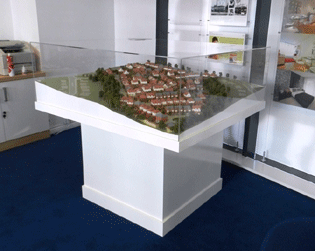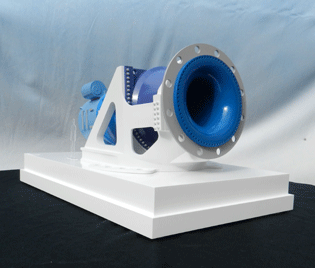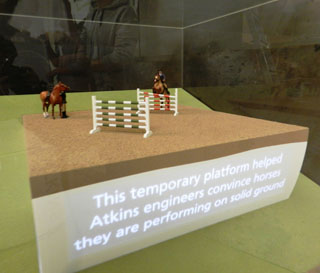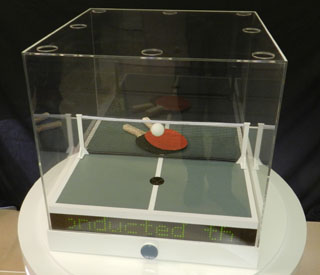Detailed marketing model on complex sloping site.


This technically demanding project was one of several marketing models we have made recently for national house builder Taylor Wimpey. It was a particularly difficult project because it comprised over 150 units on a steeply sloping site. Many of the houses were split level properties and each plot required accurate modelling of retaining walls, complex access steps, and carefully designed embankments in the gardens. Even though 1:250 is a fairly small scale, if you click on the first image to enlarge it you’ll see the high level of detail we have been able to achieve. The second image shows the model on site in their marketing suite.
Button controlled model for Northern PowerGrid


CLNR stands for Customer Led Network Revolution, a method of optimizing the power supply network based on immediate reaction to varying customer demands. The purpose of this model was to illustrate Northern Powergrid’s strategies for maximizing the efficiency of their supplies to both domestic and commercial users. The model looks deceptively simple but actually features some complex programming to demonstrate how the network adjusts to the demands of different users at different times of the day, including storing surplus power for later use. The button panel allows the user to set up varying power requirements which are indicated by lights on the model (turning red) and then press further buttons that illustrate how the demands are resolved (turning the lights green) with energy efficient systems and procedures.
“Drivetrain” for wind turbine – Scale 1:20


A “Drivetrain”, in case you were wondering, is the component that harnesses the power from the revolving blades of a wind turbine – it’s the machinery the blades are connected to at the top of the tower, normally hidden under a cowling. This particular model was commissioned for use as an eye catching display at trade shows and exhibitions. It was designed to illustrate the flexible, modular nature of the client’s product which could be easily adapted for different types of wind turbine. Taking the real thing along wasn’t really an option due to its massive size and weight. If you click on the images to enlarge them, you’ll see the outline of a standing figure which gives a sense of the machine’s real life dimensions. At 1:20 scale we were able to show a plenty of realistic detail, including individual nuts and bolts and the huge single disc brake with four callipers on the back face of the model.
Detailed Marketing model – Scale 1:150


When space in a sales office is limited, 1:150 is a useful scale option because it is small enough to keep the model compact but large enough to show plenty of detail, which helps bring the model to life. This model was only 450mm square but if you look closely at the enlarged images you’ll see we’ve actually been able to show the wooden handrails on the balcony balustrades. This type of detail invites the viewer to inspect the model up close and allows them to visualize themselves enjoying the sea view from what could be their apartment balcony. All of which builds confidence and can help secure early sales, even when the site outside is little more than a hole in the ground.
Five models reflecting Atkins involvement in the London Olympic Park





Designed and built for Atkins Engineers, this group of five interactive models was commissioned to reflect Atkins' huge involvement in the construction of the London Olympic Park. Each model highlights a particular aspect of the unglamorous but essential engineering work Atkins carried out at the site, from creating an artificial level surface for the equestrian event, to installing fundamental infrastructure such as bridges, water supplies and drainage. One of the models, which incorporates scrolling LED messages and allows the operator to lift a table tennis ball into the air by controlling a fan, conveys how Atkins designed complex climate control systems to "engineer" the air in many of the park's specialist sporting venues. The models were used initially at an exhibition event linked with the start of the Olympics but will subsequently be displayed in the reception areas of Atkins' main offices around the UK. There is also a plan to export one of the models to the Middle East. .